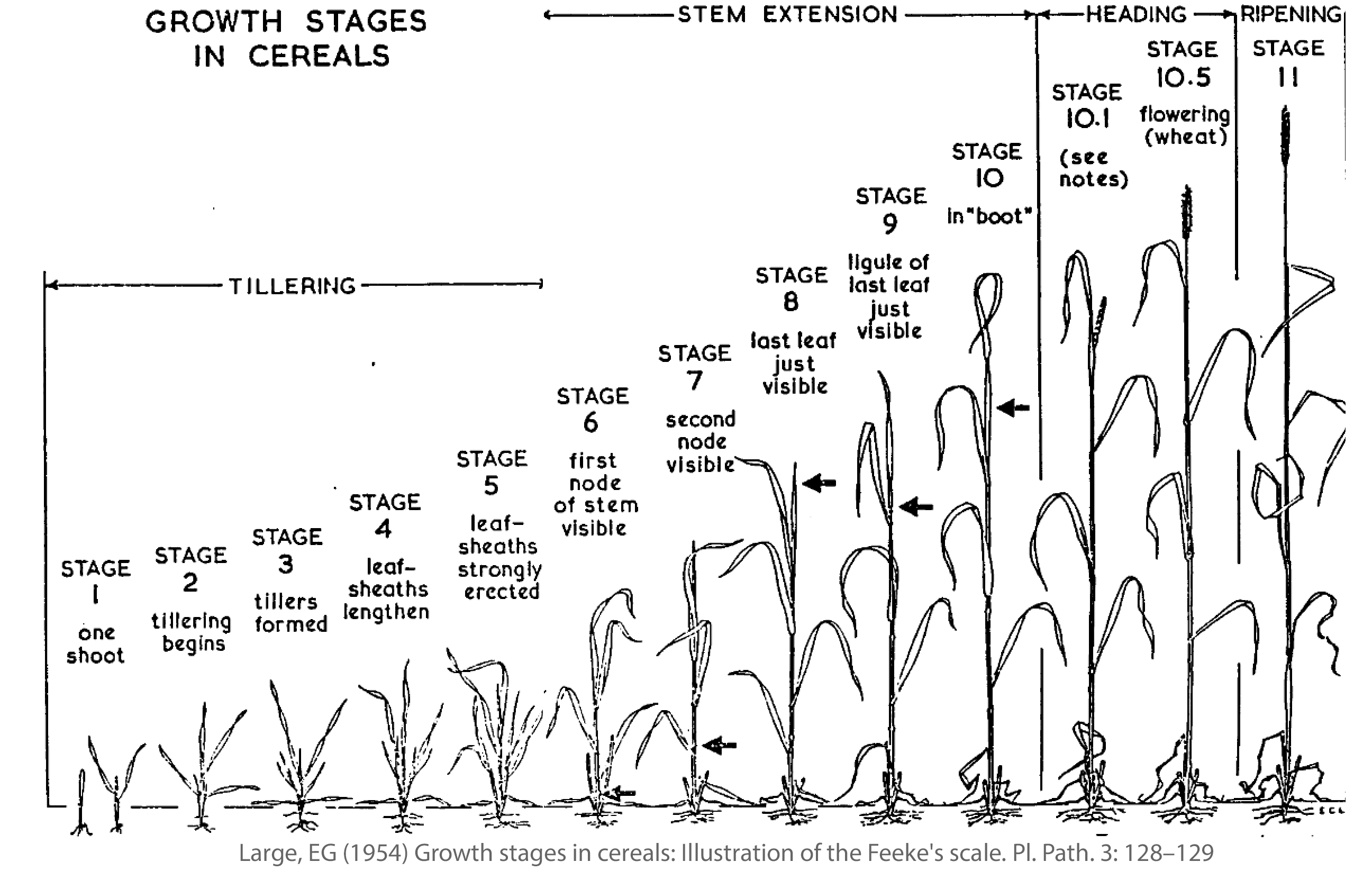The Nitrogen Fertilizer Management Tool for California Wheat (Beta) estimates grain yield and protein responses to in-season applications of N fertilizer. The tool combines site-specific weather and soil data with user-supplied, field-specific measurements & management information to produce real-time estimates of crop responses to added N fertilizer.
Users provide pinpointed measurements of the plant and soil that indicate whether the crop is likely to be sufficient or deficient in N. More details about these measurements are available below and in accompanying websites. Briefly, users record measurements of crop vigor within their field at the canopy and/or leaf scale and compare these to the same measurements taken within an N-rich reference zone(s). In addition, a relatively simple, DIY test of soil N status called the soil nitrate quick test can supplement the plant measurements and improve the accuracy of the crop response estimates.
N rich reference zones
A nitrogen (N) rich reference zone is a small area within a field where extra N fertilizer is added at the beginning of the season. This extra fertilizer ensures that crops within the reference zone are not N-limited between planting and the time when an in-season fertilizer decision is made. When a grower is determining whether and how much N fertilizer to add in-season, reflectance measurements from both the reference zone and the broader field are compared to understand whether the broader field is currently sufficient/deficient in plant-available N.
For more information about how to establish an N rich reference zone see https://ucanr.edu/blogs/blogcore/postdetail.cfm?postnum=42576
Reflectance measurements
Reflectance measurements help determine plant vigor by measuring light reflected from the whole plant canopy or absorbed by a single leaf. Comparing measurements made in and immediately outside of N rich zones in representative areas of the field helps determine if the crop is likely to respond to more N fertilizer.
Canopy and leaf reflectance measurements taken with devices such as a Trimble GreenSeeker, an AtLEAF Chlorophyll meter, or a drone- or satellite-based multi-spectral camera are expressed as a Sufficiency Index (SI). A SI is the ratio of the measurements taken from the broader field to the measurements taken in the N rich zone . Assuming spatial variability is accounted for, SI values less than 0.97 indicate possible crop N deficiency, and values less than 0.93 indicate probable crop N deficiency.
For more information about taking reflectance measurements and calculating an SI see https://ucanr.edu/blogs/blogcore/postdetail.cfm?postnum=42903
Soil nitrate quick test
The soil nitrate quick test is a simple and low-cost DIY test. It provides a ballpark estimate of the soil nitrate-N concentration in the crop rootzone. Nitrate is a highly plant-available form of nitrogen. Using the soil nitrate quick test when N fertilizer decisions are being made will help narrow the range of fertilizer rates appropriate for a field.
For more information how to conduct a soil nitrate quick test see http://smallgrains.ucanr.edu/Nutrient_Management/snqt/
For more small grain management information see: http://smallgrains.ucanr.edu/
About
The Nitrogen Fertilizer Management Tool for California Wheat (Beta)
The Nitrogen Fertilizer Management Tool for California Wheat Lite (Beta)
Questions, Comments, & Feedback
Location
Click or move the marker to the location of interest. For full functionality, choose a field within the wheat-growing region of CA (non-shaded region).
Period of interest
Growth Stage

Crop Variety
Choose the crop type or variety (if known) for the field of interest.
Irrigation
Seasonal Precipitation & N Uptake
Growth Stage

Site-specific measurements
Site-specific measurements help to determine whether in-season N applications are needed. To estimate crop response to in-season N applications, this tool requires a site-specific measurement of crop canopy or leaf reflectance. If no measurements were taken, default values will be used to estimate crop response but may be inaccurate for your field.
Growth stages

tesing
Crop growth stage

tesing
N Fertilization
The in-season N rate recommended for yield or protein-yield optimization indicates the lowest rate of N fertilization needed to achieve a yield or protein-yield that is statistically equivalent to the field expectations (entered on the previous page). The recommendation assumes there is an adequate plant stand and water is not a limiting factor.

